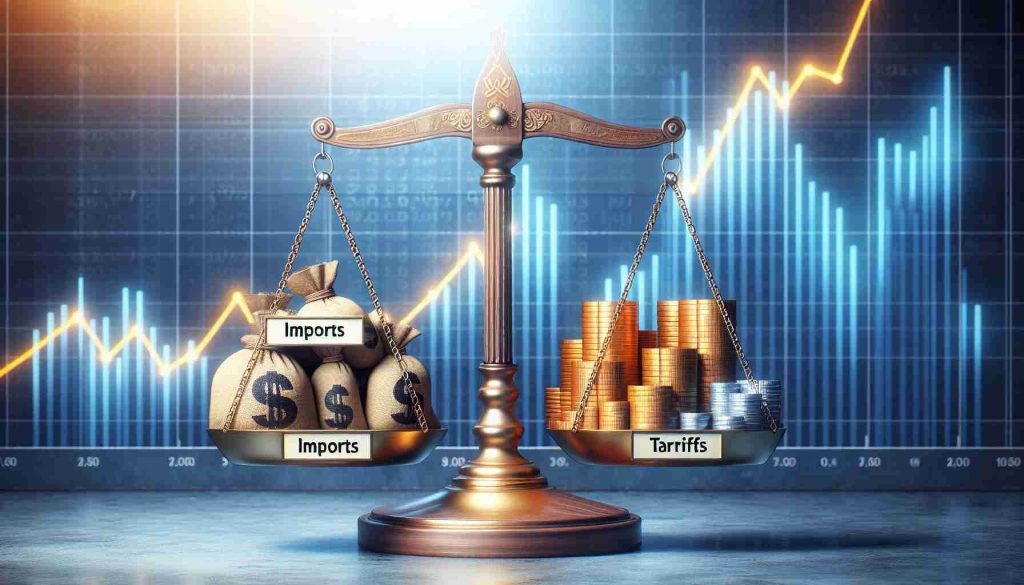- President Trump plans a 25% tariff on imports from Canada and Mexico, starting February 1st.
- The tariff aims to address concerns over immigration, drug trade, and trade deficits.
- Trump is also considering a 10% tariff on Chinese goods, linking it to the fentanyl crisis.
- Canada and Mexico officials are prepared to retaliate against these tariffs.
- Experts warn that consumers may face higher prices for essential goods, from gas to groceries.
- The situation could disrupt the U.S. economy significantly, given the reliance on Canadian crude oil imports.
- Tariffs designed to protect local economies may inadvertently lead to increased costs for American consumers.
In a bold move, President Trump has declared his intention to impose a staggering 25% tariff on imports from Canada and Mexico starting February 1st. This controversial step is fuelled by concerns over undocumented immigration and the alarming flow of fentanyl into the U.S., alongside trade deficits with its neighbors. Although the oil sector remains in limbo regarding these tariffs, Trump remains adamant about seeking financial consequences for this ongoing crisis.
As he utters the words, “China will pay too,” the stakes rise even higher. Trump is eyeing 10% tariffs on Chinese goods, linking these levies to the deadly repercussions of fentanyl infiltrating American shores. His presidency reignites whispers of a potential trade war, as previous tariffs have stifled imports from China since 2018.
Meanwhile, officials from Canada and Mexico are poised to retaliate against any tariffs imposed, further escalating tensions. If Trump’s tariffs extend to energy sources, experts warn that consumers could face a spike in prices across the board—everything from gas to grocery bills could feel the crunch.
The takeaway? While tariffs are designed to protect local economies by encouraging consumers to choose domestic goods, they might end up backfiring, leaving everyday Americans grappling with higher costs. With roughly 40% of U.S. crude oil imports flowing from Canada, this decision could lead to significant economic repercussions. Buckle up—the trade landscape is about to get a lot more turbulent!
Will Trump’s Tariff Plans Upend Trade Relations and Consumer Prices?
Understanding the Implications of Trump’s Proposed Tariffs
In a significant turn of events, President Trump’s plan to impose a 25% tariff on imports from Canada and Mexico, starting February 1st, has highlighted potential shifts in trade relations, consumer costs, and foreign relations dynamics. This decision, reportedly motivated by issues of undocumented immigration and the opioid crisis, particularly fentanyl, indicates a return to aggressive trade policies reminiscent of earlier years during his presidency.
# Key Information on Tariffs and Economic Impact:
1. Market Forecasts: Analysts predict that ongoing trade tensions could lead to a reduced GDP growth rate in the U.S. If tariffs on Canada and Mexico are implemented, experts forecast a potential decrease in economic activity, projecting a GDP hit of around 0.5% to 1.5% depending on the severity and duration of the tariffs.
2. Pros and Cons of Tariffs:
– Pros:
– May encourage local production.
– Intended to address trade imbalances.
– Aimed at tackling illegal drug importation by targeting international supply chains.
– Cons:
– Consumers could see increases in prices for goods and services, affecting everyday expenses.
– Potential retaliatory tariffs from Canada and Mexico could harm U.S. export industries.
3. Energy Sector Concerns: Currently, 40% of U.S. crude oil imports are sourced from Canada. Tariffs on energy could lead to soaring fuel prices, rippling through other sectors and raising costs for consumers at grocery stores and beyond.
# Important Questions to Consider:
1. What are the anticipated effects of these tariffs on consumer prices?
The imposition of tariffs can lead to increased costs for imported goods, which are often passed down to consumers. Retail prices for everyday items, from groceries to electronics, could spike, causing financial strain for households.
2. How might Canada and Mexico retaliate against these tariffs?
Canada and Mexico have previously indicated their willingness to respond to U.S. tariffs with their own trade barriers. This could result in a tit-for-tat situation that escalates tensions and complicates trade relations.
3. What long-term implications could arise from a renewed trade war?
A protracted trade dispute can undermine international relations, disrupt global supply chains, and may lead to a decrease in foreign investment. If tariffs lead to economic challenges, public sentiment could shift against current trade policies, prompting political changes in upcoming elections.
For further insights on this evolving situation and its broader implications, consider exploring more at Trade.gov.
The landscape of international trade is rapidly changing, and as tariffs loom large, the future of U.S. economic policy and consumer behavior hangs in the balance.










More Stories
Relebogile Mabotja’s Bold Move: Transforming Streaming with an Epic Live Show
Love Island: All-Stars Season 2 Takes a Controversial Turn with Shocked Fans
From Silence to Strength: Zhao Lusi’s Amazing Comeback You Won’t Believe